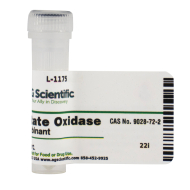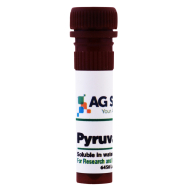Biosensors are devices used in identifying a selective range of analytes (specific substances that require detection). The device comprises two elements: a biological component and physicochemical detector (also known as the transducer).

Understanding Biosensors
Each biosensor functions by converting biological responses into readable electrical signals. This process is achieved by generating signatures proportional to the concentration of the analyte. The first biosensor was created in 1956 by biochemist Leland C. Clark Jr. and was used in the detection of oxygen in blood. Leland is often credited as the father of biosensors due to his groundbreaking contributions.Biosensor technologies have long since been developed to analyze other physical constituents. Biosensors are commonly applied in the life sciences, as well as environmental and medical fields.
Common uses of biosensors include:
- Detection and control of environmental pollution
- Clinical and medical diagnoses in managing health conditions
- Health Screening (such as detecting microorganisms responsible for infection in bio-fluids such as blood or saliva)
- Agricultural Tests
- Forensic Studies
- Biomedical research
- Management of water quality
Diabetes Management
Glucose biosensors have been traditionally linked to diabetes control. These products are used by diabetic patients in the comfort of their homes for self-monitoring of blood glucose (SMBG). Biosensors have made it easier to manage blood glucose levels, which remain a vital indicator in diabetes.
The glucose biosensors employed by diabetics are usually based on two enzyme families: GOx and GDH. They are inserted under the skin and can be left through the night, which provides a clear reading of blood glucose trends. Glucose biosensors are especially effective when used after meals and first thing in the morning(where there might be morning spikes of sugar). SMBG has remained extremely crucial in diabetic treatment as it enables sufferers to maintain target blood sugar levels and evaluate environmental responses (i.e. diet & sleep quality) for the condition.
Establishing Biomarkers with Biosensors
Biosensors have been used to detect biomarkers responsible for diseases and illnesses. For example, immunosensors are used to detect and manage cancer biomarkers. As such, biosensors can provide earlier detection of diseases and tracking the condition of patients in response to medical treatment and therapy.Single-use Biosensors
There are some sensors catered for one-time use only and have been applied in scientific research. Single-use biosensors have been applied in thedetection of biomarkers for prostate cancer and mutation research, such as Factor V Leiden, a condition known for causing blood clot abnormalities. Biosensors are a popular choice in scientific research as they are cost-effective and only require a small quantity of test-medium in acquiring accurate results. Additionally, biosensors are known to be high in sensitivity and selectivity, which produces accurate findings.Wearable Biosensors
Biosensors have also begun to emerge from lab-settings and are being integrated into portable applications. These may come in the form of rings, smart shirts, spectacles, devices that measure blood pressure, heart rate, sweat, and so on. Wearable biosensors can benefit infants, athletes, the elderly, and many other groups.
The Lactate Scout is an example of such wearable devices. Lactate Scout functions as a training companion for active individuals through managing lactate levels. The process is fast, easy and highly reliable. Lactic acid determines various aspects of fitness, such as endurance, which is why Lactate Scout is popular among gym trainers and athletes. Another example comes in the form of wearable flexible sweat sensors, which offers insights on thermoregulation by measuring sweat levels at real-time speed. Sweat has been considered a highly effective biomarker for diagnostic studies due to its easy accessibility and its valuable constituents of metabolites and electrolytes. Scientists have applied flexible sweat sensors in the study of genetic conditions such as cystic fibrosis in children and diseases related to sodium loss. In this case, sweat is the basis of the biosensor - which is interpreted by a transducer of choice.
Ionophore-based Optical Sensors (IBOS)
IBOS are a high tech method of detecting pathogens via fiber-optic based technologies. These sensors commonly utilize enzymes as effective reagents for accurate results. IBOS are used in multiple fields and may be considered the next phase in electrochemical biosensor development. Breakthroughs include metabolic engineering through in vivo monitoring of cellular metabolism.
Some recent uses of IBOS include:
- The measurement of ammonia levels in the atmosphere. It is necessary to determine the concentration of ammonia in the air as an excess could lead to pollution and health issues.
- Gauging creatinine levels in urine, which are indicative of kidney function.
- Detection and management of histamine levels in the body.
- And much more.
Ionophores are a chemical species that reversibly bind ions. As such, ionospheres can modify the natural permeability of biological membranes, making it easier to detect biomarkers.


